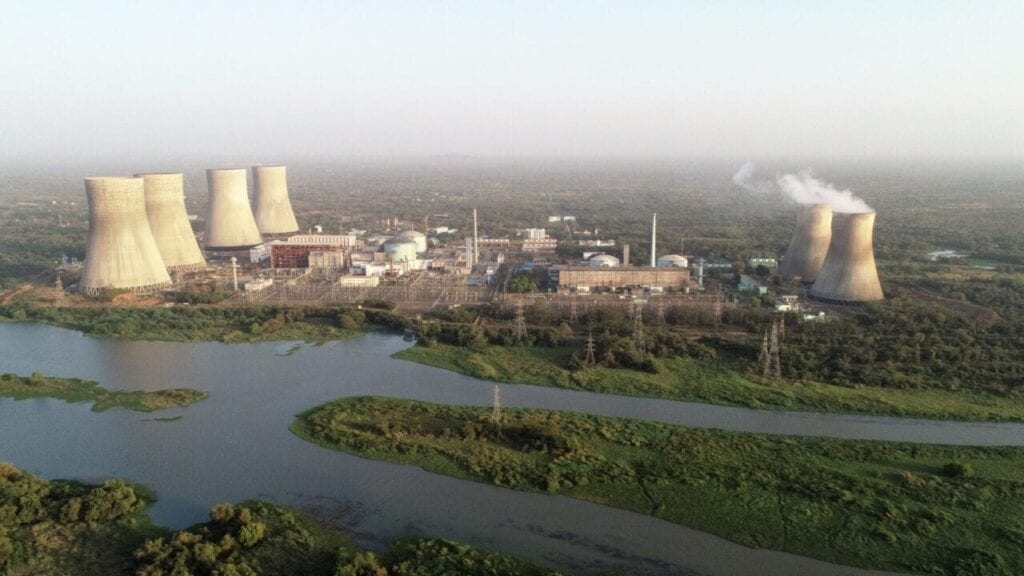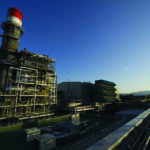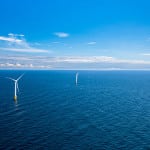Milestone for First 700-MW Domestically Built Indian Nuclear Reactor. Unit 3 of the Kakrapar nuclear power plant in the Indian state of Gujarat—an indigenously designed 700-MW pressurized heavy water reactor (PHWR)—attained a sustained chain reaction for the first time, state-owned Nuclear Power Corp. of India Ltd. (NPCIL) reported on July 22. NPCIL celebrated the milestone as a “historic development,” noting the project is the country’s first nuclear plant to source domestically produced components and equipment. It was also built by various Indian contractors, it said. Fuel loading of the reactor core was completed by mid-March 2020, and several tests thereafter were completed despite strict COVID lockdown measures. As part of future steps, various experiments and tests will be conducted before power is progressively ramped up, and the plant is connected to the Western grid. Kakrapar 3 is a suite of eight planned 700-MW PHWRs by India’s government. After Kakrapar 3 is grid connected, expected by October, Kakrapar 4 is scheduled to come online in September 2021. Two units under construction in Rajasthan are expected to be commissioned in March 2022 for Unit 7 and Unit 8 in 2023.

AES Secures Early Termination of Chilean Coal Plant PPAs. AES Gener, AES Corp.’s South American subsidiary, on Aug. 10 said it reached an agreement for the early termination of two power purchase agreements (PPAs) related to the 558-MW Angamos coal-fired plant in Chile. “Per this agreement, the PPAs will cease in August 2021. This year, Angamos will receive a payment of $720 million, primarily reflecting the present value of fixed charges through 2029, as stipulated in the PPAs,” the company said. “As a result of this agreement, AES Gener is accelerating all future payments from two of its long-term coal generation contracts, for a total of $720 million,” said Andrés Gluski, AES president and CEO. “This transaction also expedites the timeline of AES Gener’s decarbonization program, while providing additional funding for AES Gener’s current backlog of 2 GW of renewable projects.” As of 2022, Angamos will be fully merchant. AES said, “Once the system no longer requires the plant to ensure the reliability of the grid, AES Gener will proceed to shut it down, having fully recovered its expected return and investment.”
ENTSO-E Urges Massive Grid Expansion, Multi-Sectorial Planning Support. ENTSO-E, the European network of 42 electricity transmission system operators (TSOs) from 35 countries across Europe, suggested in its latest “System Needs Study” that the region will need a total of 50 GW of cross-border transmission capacity reinforcements on nearly 40 borders in 2030 and 43 GW more on 55 borders in 2040 to keep the region’s power reliability and costs “under control.” The 93 GW finding goes significantly beyond the 35 GW the grid operators’ group previously identified and is under construction or planned until 2025. The study, which is carried out biannually, forms part of the organization’s Ten-Year Network Development Plan (TYNDP), a long-term plan on how the electricity transmission grid is expected to evolve in Europe to implement European Union climate and energy goals. Among ENTSO-E’s other key findings are that substantial investments in the transmission grid could drastically reduce costs. “Investing €1.3 billion a year between 2025 and 2030 translates into a decrease of generation costs of €4 billion a year, while investing €3.4 billion a year between 2025 and 2040 decreases generation costs by €10 billion a year,” it finds. ENTSO-E, notably, also recently moved to implement coordinated multi-sectorial planning support (MSPS) in future TYNDP roadmaps to provide a more “holistic” approach to the energy transition. The “Smart sector integration” concept has become “an important topic on the European energy policy agenda,” and it will be important to “enhance flexibility across various energy sectors,” as well as to allow development toward “a more energy- and cost-efficient energy system,” it said. MSPS essentially serves as an umbrella for infrastructure planning activities, and it will be a starting point for system and sector development plans. It will consider all types of primary energy, secondary energy, infrastructures, transformation, storage, and end-use needs, as well as their technologies, it said.
GE Inks Agreement for Pumped Hydro Development in Australia. GE Renewable Energy on Aug. 4 signed an agreement with Walcha Energy, developer of a massive 4-GW hybrid energy complex proposed around the town of Walcha, New South Wales, Australia, to provide technical and commercial support to accelerate development of the 500-MW Dungowan pumped-storage project. The pumped hydro storage plant is a key part of the Walcha Energy Project, and it is intended to anchor the broader development and ensure that additional wind and solar resources can be reliably and safely fed into the grid. The plant will be built in the New England Renewable Energy Zone (REZ), New South Wales’s second REZ that will be dedicated to the development of 8 GW of renewable power. “Nearly half of the more than 8 GW of hydropower capacity operating in Australia today is powered by our turbines, generators or both. However, it has been many years since new hydro capacity was built in Australia, so GE Renewable Energy is excited and proud to be at the forefront of the next wave of Australian hydropower capacities,” said Pascal Radue, CEO of GE Renewable Energy Hydro Solutions.
Kenya Explores Nuclear Power. Kenya’s nuclear agency (NuPEA) on Aug. 4 submitted impact studies to the National Environment Management Authority for the country’s first nuclear power plant, a project it estimates could cost $5 billion. While the agency said it is still evaluating technologies, it added, “The first nuclear power plant of 1,000 MW is expected to be commissioned by the year 2027 and it is expected to grow to 4,000 MW by 2035.” The country said the power will be needed to fuel its growing industrial sector, and President Uhuru Kenyatta has expressed ambitions to ramp up Kenya’s installed capacity from 2,712 MW as of April to 22,000 MW by 2031 to meet anticipated demand. Nearly 50% of the country’s generation supply comes from geothermal sources. The remainder comes from gas, hydro, solar, wind, and coal. In recent years, the country has rolled out a national electrification strategy that seeks to provide universal electricity service to all households and businesses by 2022. In 2018, 75% of the population had access to power, but service in many parts of the country remains inadequate and unaffordable.
Israel Seeks to Cut Planned Natural Gas Power. Israel’s Energy Ministry in mid-August asked the National Planning and Building Council to remove four new gas-fired power plants—a total 4,869 MW—from long-term plans. In June, Israel’s Energy Ministry unveiled a $22.8 billion plan to boost solar power’s share to 30% of its total power mix over the next decade to meet a potential surge in the country’s energy demand. At the end of 2019, 64% of Israel’s power came from natural gas, 5% from solar, and the rest from coal. Because Israel wants to phase out coal by 2026, the new plans would require about 16 GW of new solar power capacity, which is roughly the same as Israel’s total power capacity installed to date, the ministry said. n
—Sonal Patel is a POWER senior associate editor (@sonalcpatel, @POWERmagazine).










